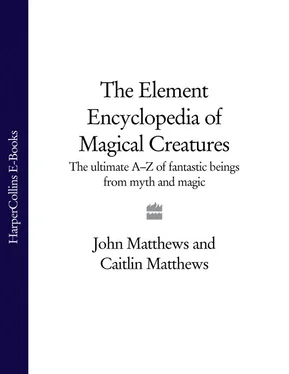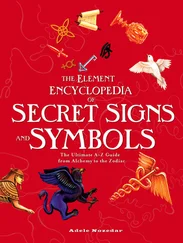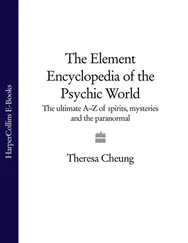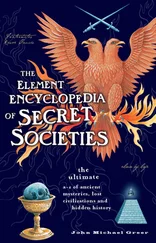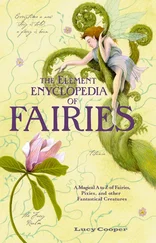The Element Encyclopedia of Magical Creatures
John & Caitlín Matthews
the ultimate a—z of fantastic beings from myth and magic

This book is dedicated to the loving, wise and magical Dwina Murphy-Gibb
Cover Page
Title Page
Dedication
Foreword
Introduction
A
B
C
D
E
F
G
H
I
J
K
L
M
N
O
P
Q
R
S
T
U
V
W
X
Y
Z
Bibliography
Index
Discover an Incredible World Full of Every Magical Creature You Could Possibly Imagine…
About the Author
Copyright
About the Publisher
Foreword
The City of Gargoyles
We live in a city of gargoyles and fabulous beasts. Extraordinary creatures of all kinds cavort, peer and grapple on most of the walls wherever we walk around Oxford. We are daily familiar with the griffin, the cockatrice, the winged lion and many other magical creatures who guard the buildings of our city.
When we began this book, we were explorers who had yet to see their first phoenix, but we were astonished at the abundance of magical creatures and the worldwide similarities in the stories and themes that make animals and other beings kin to us all. We did not take a microscope or any dissecting tools with us, nor did we wear the sceptic’s sharp-angled spectacles that make all objects under observation appear warped and foolish. Indeed, we did not start out to set ourselves up as any kind of experts. It has been love of all living things that has kept us on the road and helped us travel safely on the compass-point pathways that lead from north to south and from east to west. Some creatures showed themselves to us very generously, others were shy and retiring, and so we had to listen to what other people had reported about them. We hope that such second-hand sources do not amount to idle or damaging gossip, and that the creatures in question may retain their secret habitat free from molestation.
As you set out in these pages, we urge you to wander at will, rather than to read from A–Z. The magical creatures themselves will lead you to find the hidden country that is your unique imagination. We also believe that there are creatures we have not described because they have yet to come into being. As long as the land of imagination is allowed to remain, with such a rich source of fodder, extinction is not an option.
Of course, no book of this extent could be done without the help of all the students of mythical creatures who have gone before. We would like to acknowledge those who made our own researches easier, especially Jan Knappert, Carol Rose and J.C. Cooper, whose wonderfully rich works inspired us to hunt still further. Thanks also go to Emrys Matthews for help with the appearance of various creatures, especially the Vampire, Werewolf and Zombie, in the media, where so many of these have found a new home.
John & Caitlín Matthews
Oxford, 10 March 2005
Introduction
The Zoology of the Imagination
‘The zoology of our dreams is far poorer than the zoology of the Maker.’
Jorge Luis Borges,
The Book of Imaginary Beings.
Here are creatures of every possible kind. Creatures that hold up the world; creatures that destroy the world; creatures who are one half human, one half animal and sometimes even part god. Here are animals we think we know, but whose natures are magical; creatures who have strange characteristics such as faces in the middle of their bodies, animal heads, forelegs and back legs of different species. Here also are creatures that follow us, padding silently through the night; creatures that prey upon us, from the fearsome and terrible fire-breathing dragon, to the body of water that has a mind of its own and will leap up and chase you before gobbling you up. All are the product – in one form or another – of human imagination, from a time before thought was organized into word and word into text.
Curiously, it seems we have come full circle, since in our own time imagination responds more to visual stimuli rather than to ancient tales, and we are by no means bereft of creatures that enthral, scare and astonish us with their wonder. Film and TV are, for many of us, the first and most immediate source of myth and folktale – from the classic stop-frame animation of Ray Harryhausen, who gave us Medusa and Pegasus in Jason and the Argonauts, to Steven Spielberg’s Jurassic Park, with its credible dinosaurs, we have gained an appetite for ever more wondrous creatures. Whether we think of the computer-animated adventures of the ogre Shrek, or the mythic creatures conjured up, and sometimes ridden, by Harry Potter and his friends at Hogwarts Academy, we are not content simply to accommodate the creatures we have known from the past – we want more. The cinema has not been slow to satisfy this appetite and to stretch our imagination even further. George Lucas has given us a veritable menagerie of new species in his Star Wars universe – from Wookies to Bantha, from Rancor to Hutt. In addition, a legion of movies and TV shows such as Buffy the Vampire Slayer, Angel and Ultraviolet, numerous versions of Dracula and the Blade trilogy, have kept the history of Vampires and Werewolves fresh and alive in our dreams. These clearly demonstrate that we have not seen the last of the creatures that are to enter into creation.
The naming of animals is a primal task, one that God, in the Christian myth, gave to Adam in the Garden of Eden. Naming is a means of understanding more about an animal, for the name denotes the nature. Our collection is a wonderful menagerie where names have been arranged in alphabetical order for ease of consultation, but we urge you to read where your imagination prompts you, as it pleases you to explore, to learn more about Kkuuxuginaagits, the Ganiagwaidhegowa or the wonderfully onomatopoeic Toatoatavaya-o.
This book is a zoology of the imagination more than it is a natural history. It follows the myths of magical creatures wherever they show themselves, myths that are primal stories encoding understandings that we grasp by means of metaphor rather than with any literal-mindedness. Where will these creatures lead us?
Magical creatures and fabulous animals form part of the order of nature that we can call the supernaturals. The place of their existence is not in the physical world, but in the otherworldly realms that surround and permeate our own world. Because the Otherworld and our own everyday world overlap at different points, where time and place interface with timeless space, these are the points where we encounter its inhabitants. For example, the unicorn does not just live in times past because the stories we tell about it seem fabulous, it has its own timeless existence in the Otherworld. It can cross out of that realm and appear when it chooses and to whom it chooses.
Those who go in pursuit of the supernaturals must be prepared to follow them into other dimensions. It is only time and placebound folk who deny their existence, because they have lost the flexibility and sense of adventure to go in quest of them. These otherworldly dimensions and the coordinates of transfer between realms have become less known and frequented in an age that is becoming sealed into one side of reality. This reserve or scepticism about other realms is not a problem that has arisen just in our time, as Shakespeare shows in Henry IV, where Hotspur rants about Glendower’s arcane beliefs:
Читать дальше
